
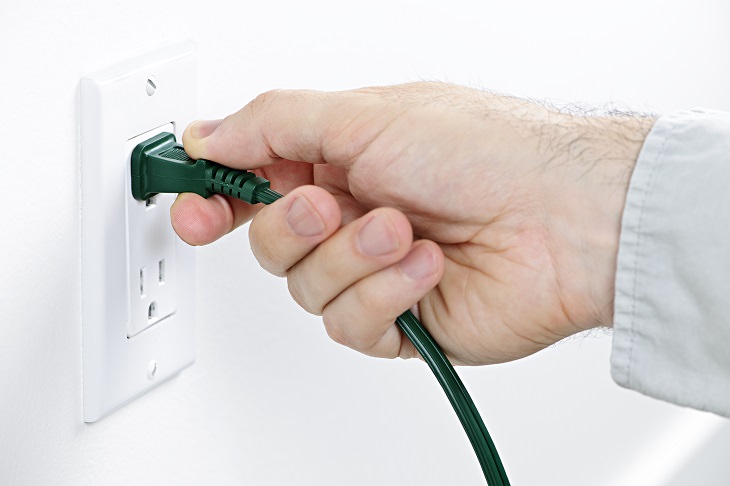
Energy vampires are those plugged-in devices that use electricity even when they’re turned off or not being used. This standby power is what keeps the clock ticking on your cable box, your Amazon Echo waiting for its next “Alexa” command, and your TV’s settings in place. While this is obviously convenient, it can cost the average US household $100 per year. You can eradicate these phantom loads simply by unplugging your devices.
2. Get Smart about Your Thermostat
Smart thermostats can help to decrease your energy bills by automatically adjusting heating and cooling settings within a range of comfortable temperatures. Some, such as the ecobee4, can also adjust your home’s temperature based on whichever rooms are currently occupied. The average smart thermostat will save you $180 per year on your energy bills and will analyze your energy usage with monthly breakdowns.
3. Switch to Energy-Efficient LED Lighting
Did you know that LED light bulbs can use 90% less energy than standard ones? Yes, they cost more than ordinary bulbs, but in addition to saving you money on future electric bills, they last around 15 times longer, meaning you won’t have to keep spending money replacing them. For example, Philips LED bulbs have an average lifespan of 25,000 hours. This means that if you keep one on for three hours each day, you won’t have to buy a new one for nearly two decades.

To conserve energy while cleaning your clothes. You should wait until you have a full load in the washer and run it using lower temperature settings. Whenever possible, air dry your clothes instead of using the dryer, but if you do use the dryer, be sure to clean the lint trap before starting. Every now and then, remove the vent duct that connects the back of your dryer to the outside of the house and clean that too.
5. Avoid the Oven
When your air conditioning is working to keep your house cool, you should avoid using appliances that radiate excess heat. Therefore, you should opt to cook with the microwave or stove top when possible. Or bet yet, fire up the grill and cook outside.
6. Turn off the Lights
Lighting your home accounts for around 20% of your electric bill, or an average of $200 per year. If you’re guilty of always leaving the lights on, try a smart light switch such as ecobee Switch+ that will automatically turn off your lights a few minutes after you leave the room. You can also use them to turn on your lights, so you don’t have to come home to a dark house.
7. Upgrade Your Shades
When picking window shades for your house, you should consider insulated cellular shades, which can increase energy savings by making your windows more efficient. The Department of Energy reports that these single-cell shades can decrease heat loss in the winter by 40% and prevent unwanted solar hear in the summer by up to 80%. Even better, these shades can be automated, meaning that they can be programmed to rise at certain times of the day to support your energy savings.
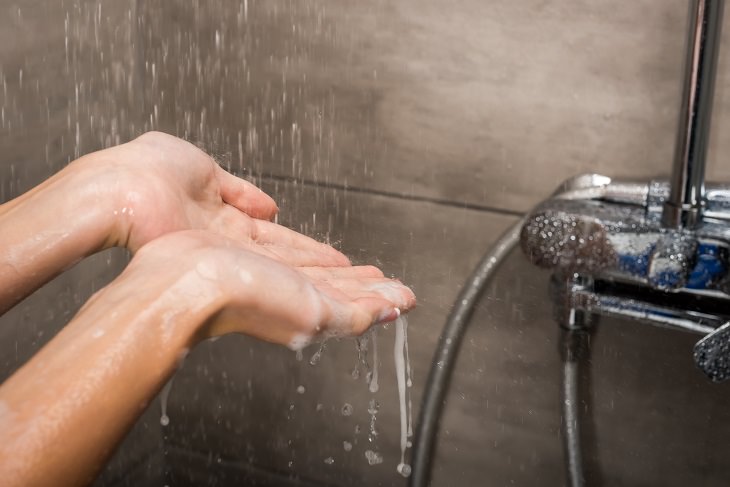
The average household spends $400 to $600 on water heating every year; approximately 18% of your utility bills. An easy way to cut back on your hot water usage is to take shorter showers or install a smart shower head to monitor your water usage and temperature.
9. Make Your Windows More Efficient
If you have money to spare, replacing old windows with energy efficient ones is a worthwhile investment as they also add value to your home. A lower-cost option is to install window film that blocks out the summer sun’s heat reducing demand on your cooling system, and helps to keep warm air from escaping during the winter.
10. Change Your Furnace Filter
A dirty or clogged furnace filter can create a lot of pressure on its motors, making your furnace work a lot harder. The harder your furnace is working, the more energy it uses, so start replacing the filter on a regular schedule.
Source: rd
Images: depositphotos

10 Great Money Tips from the World's Most Successful People
People rarely find success by accident. So why don’t you set yourself up for financial success by listening to the following pieces of advice.

Overspending on Food? It Could Be Due to These Mistakes
Here's a list of the most common shopping mistakes we tend to make.

14 Common Scams You Should Familiarize Yourself With!
Thousands of people are scammed every year, and fraudsters are constantly coming up with new ideas. Here are 14 common scams you should be aware of.

11 Simple Health Hacks to Change Your Life for the Better
To get healthy quick, all we need to do is follow these instant health upgrades. Take a look!

How to Keep Your Mind a Little Sharper at Any Age
Everyone has a tendency to be a little forgetful. Here are 7 exercises that will help keep your mind sharp at any age.
 9:36
9:36
10 of the Best Ways to Hide Money When Traveling!
In this video, you’ll see ten great ways to hide your money for that extra peace of mind.
 38:43
38:43
Philosophy: Are We Too Self-Aware to Be Truly Happy?
Through Buddhism, pessimistic philosophy, and the tortured words of Osamu Dazai, we're diving into the dark side of knowing yourself too well—and whether there's any escape.

A 'Brain Fog' Epidemic? Study Shows a Worrying Trend
Analysis of over 4.5 million U.S. survey responses spanning a decade (2013–2023) shows a rise from 5.3% to 7.4% in reported cognitive disability nationwide, with an exceptional surge in the 18–39 age group and a clear influence of income and educatio

These Lessons Taught Me How to Live My Life Wisely...
Life doesn't come with an instruction manual, but we can certainly be wise about it if well tell ourselves these 10 important sentences.

How to Remove Candle Wax From Any Surface
Stubborn wax drips on clothes, carpets, and wood that can seem like a cleaning nightmare—but they don't have to be.
 9:41
9:41
8 Natural And Safe Ways to Keep Ants Away From Your House
Take note of these useful natural remedies that can help you keep ants away from your home.

Create a Soothing Haven at Home with These Helpful Tips
Take note of these home decor ideas that can help you create a soothing and stress-free sanctuary at home.
 8:59
8:59
Who Knew That Paperclips Could Be Used for So Many Things?
Paperclips are far more useful than anyone ever told you. Watch this video to find 20 new uses!

Food Hacks: 12 Smart and Simple Ways to Save Cooking Time
Try these simple and easy food hacks and tricks today to save you plenty of cooking time.
 9:37
9:37
Why Every Gardener Should Have a Bottle of Neem Oil
Neem oil is a natural, plant-derived substance capable of treating and preventing several kinds of plant pests and diseases.
 15:30
15:30
Live an Easier Life With These 24 Everyday Tips!
This video offers 24 different tips for everyday problems.

9 Ways to Care for Your Feet So They Don't Pain You
What's the best way to go about taking care of your feet? Here are 9 essential tips.
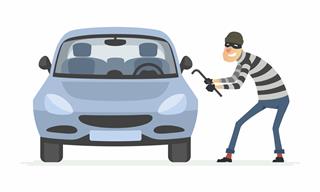
12 Things Car Thieves Don't Want You to Know...
Every 43 seconds, a car is being stolen in the United States, which is close to one million vehicles a year. These tips could prevent you becoming a victim.
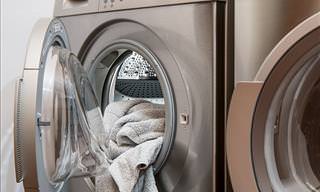
Warning: Don't Put These in the Washer or Dryer!
The washing machine and the dryer are two very efficient inventions that help us a lot - but the following 9 items are best kept away from them.
 22:48
22:48
How to Pick the Right Frying Pan for Every Recipe
Upgrade your cooking skills instantly with this full guide to frying pans and saucepans, so that your cookware works with you, and not against you!
 3:00
3:00
You've Been Tying Shoelaces Incorrectly Your Whole Life!
Although you're led to believe that you know how to tie your shoelaces perfectly well, You actually don't. Watch this TED Talk to see why.

EGGS: the Simplest Food to Help You Shed That Extra Weight
In this article, we’ll explain the whys and hows of using eggs to shed those extra pounds by providing you with 6 handy tips.

Watch: A Simple Breathing Technique to Reduce Stress
This is a slow breathing exercise which works wonders for those anxiety-filled situations you just can't control.

Unsure About Retiring? Here's Why You Should Wait
Are you financially prepared to retire? Look out for these signs.

Genius Hotel and Packing Tricks You’ll Surely Appreciate
These invaluable tricks will help you get around 18 common traveling problems, particularly those that deal with hotels and luggage packing...
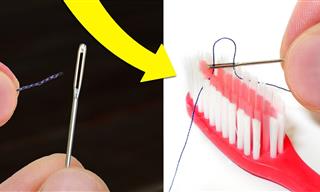 9:01
9:01
These Genius Old Life Hacks Have Passed the Test of Time
These age-old life hacks were once used by our grandparents. Turns out, they can still make our life easy.

8 Ways You're Cooking Chicken Wrong
What's the best way to cook chicken? Get the best flavor out of your chicken by avoiding these 8 common mistakes.
 5:09
5:09
Woah! Who Knew There was a Correct Way to Cut a Cake?
When it comes down to cutting a cake, there is supposedly a right and wrong way. In this video, Alex Bellos talks us through the right way.

Say Goodbye to Rotten Fruits & Veggies with These 12 Tips
The way you store your groceries can affect their shelf life. These 12 tips will help keep your fruits and vegetables fresh for longer.

8 Pressure Points for Improving Memory and Concentration
Whenever you feel stress starting to affect your concentration, or if you just want to improve your memory, try these 8 points ...

Washing Fruits and Veggies: Here's What You’re Doing Wrong
Don't make these mistakes the next time you wash your fruits and vegetables.
 2:14
2:14
Make EASY Natural Beeswax Polish At Home!
Watch this video to learn how to make beeswax furniture polish at home.

Try These Methods If You Happen to Sweat Excessively
Excessive sweating can be an embarrassing problem, but luckily, there are many different methods to use in order to halt it in its tracks. Discover them here.

Do This Eye Exercise At the End of a Screen Intensive Day
Suffer from painful and tired eyes after another day of working in front of the computer? You may be hurting your eye muscles... Fix the problem with this exercise.

11 Fantastic Methods for Removing Those Grease Stains!
Grease stains can be notoriously difficult to remove, but that will be a thing of the past if you use these 11 fantastic grease-removal methods.

Weeds Stand No Chance Against This Fantastic Weed Killer
How does a practically free, home-made, all-natural weed killer that's kind to the environment sound? Amazing, right? Here's how to make your very own.

I Bet You Had No Idea That You Could Freeze These 19 Foods
Forget about throwing away excess food and wasting money as a result - refer to this list of 19 foods that you had no idea you could freeze.

Store Potatoes For Months With These Simple Tips
If stored properly, a bag of potatoes can last for months! Here are 7 tips that will extend the shelf life of potatoes considerably.
 18:31
18:31
These 27 Great Bathroom Hacks Will Make Your Life Easier
Looking for some ingenious bathroom and shower hacks to make your life a lot easier? If so, you’ve certainly come to the right place!

Learn Quicker With These 25 Tips for Faster Learning
There are several efficient and proven methods to speed up the learning process. Here are 25 tips to achieve it.

Beat the Effects of Age by Eating Healthy Foods Like These
What we put in our stomachs is crucial to our health, as you know. But eating the right food can also stave off the tell-tale effects of aging too.

8 Everyday Activities That are Damaging Your Spine
Here's a list of everyday activities that harm your spine.

Laundry Detergent Is SO Versatile: 8 Genius Home Uses
Laundry soap, both liquid and powder, has a great number of unexpected uses, from dissolving grease stains to cleaning upholstery & even getting rid of weeds!
 4:57
4:57
Bob Proctor: How to Attract the Right people to Your Life
The video provides inspiration and hope for anyone seeking to strengthen their personal connections and create a supportive environment for success and fulfillment.

Why These 8 Purchases Shouldn't Be on Installments
Using "Buy Now, Pay Later" services may not such a good idea for these items.

Don’t Ruin Your Phone's Battery—Avoid These Charger Myths
Believing in these phone charging myths will be damaging to your device in the long run.

Want to Know How to Read People's Minds? Read This!
Learn to read people's minds, by keeping an eye out for these body language signs.

These Surprising Garlic Uses Show It's More Than Just Food
While garlic is an important ally for natural health, it has many more functions. Check out these 14 unusual alternative uses for garlic.

Lemons in the Oven? Read This Article to Find Out Why
Sick of mosquitoes and flies visiting your house? This surprising method will help you get rid of them effortlessly using lemons and an oven!
To enable your Ad-Free Subscription, please fill the fields below
Your subscription was successful, now you can enjoy an ad-free experience!! Note: To make sure you get no ads, please make sure to log in to your account. If you are logged in already, then refresh the page. The subscription can be cancelled at any time.


